Archive
Array
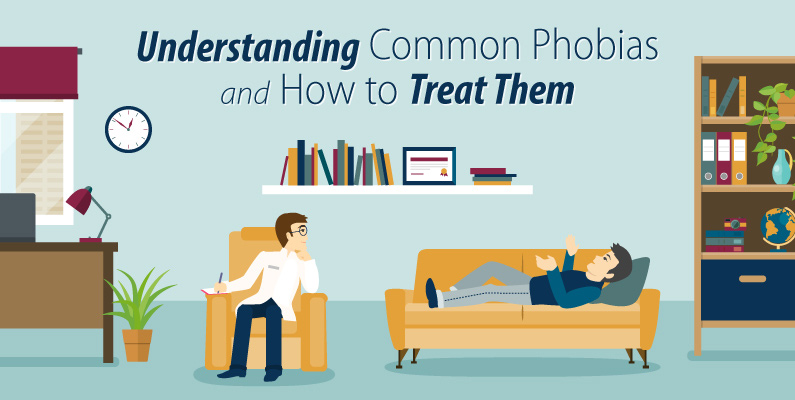
It is normal for humans to experience fear. In fact, it can even be critical to our survival, activating the “fight or flight” response and allowing us to react quickly and protect ourselves if necessary. When fears are extreme, the field of psychology considers them phobias. A phobia is an intense fear of an object or situation that poses little or no actual danger, such as heights, snakes, or small spaces. While most phobias develop during childhood, they can also manifest in adults. People with phobias usually realize their fears are unfounded, yet struggle to control their reactions.
The terror and anxiety accompanying exposure to a feared object or situation can be overwhelming, leading individuals to avoid encounters at all costs. They might even change their lifestyle or inconvenience themselves—moving to avoid an apartment with an elevator because of a phobia of small spaces, or turning down a job in a high-rise building due to an extreme fear of heights.
While phobias may seem puzzling, they are actually quite common, and highly treatable. According to the Anxiety and Depression Association of America (ADAA), specific phobias affect 19 million adults, or 8.7% of the U.S. population. Furthermore, women are twice as likely to suffer from phobias than men. What are the most common phobias, and how do mental health professionals go about treating them?
Phobias: Types, Symptoms and More
There are three types of anxiety disorders that are phobias in the Diagnostic and Statistical Manual of Mental Disorders, Fifth Edition (DSM-V). Common specific phobias include:
- Those involving animals, including the fear of snakes, spiders, rodents, and dogs
- Those involving a person’s natural environment, such as a fear of heights, storms, water, and the dark
- Situational phobias triggered by specific situations such as being in enclosed spaces, travel via airplane, or driving across a bridge
- Phobias related to blood or injuries, triggered by potential injury, needles, or medical procedures
In addition to specific phobia, there is social phobia (or social anxiety disorder), which occurs when people have an intense fear of social situations in which they may be embarrassed or judged, and agoraphobia, which involves a fear of public places and open spaces.
While the symptoms associated with phobias can range from mild to severe, panic attacks are a common response, according to Mental Health America. The following are some of the physical symptoms of phobias, as reported by the ADAA:
- Difficulty breathing
- Racing or pounding heart
- Chest pain or tightness
- Trembling or shaking
- Feeling dizzy or lightheaded
- Hot or cold flashes
- Sweating
Phobias are also associated with emotional symptoms, such as:
- Overwhelming anxiety or panic
- An intense need to escape
- Feeling detached from yourself
- Fear of losing control
- Feeling of powerlessness
Individuals should likely consider treatment for phobias if they experience intense fear, anxiety or panic, as well as avoiding situations and locations because of fear. If this avoidance interferes with the functions of daily life and feelings of fear have persisted for at least six months, treatment may be necessary.
Treating Phobias
Depending on the type of phobia and the accompanying symptoms, mental health providers may suggest psychotherapy, medication, or a combination of both as treatment. No matter what the specific treatment approach is, the goal is to “reduce your anxiety and fear and to help you better manage your reactions to the object or situation that causes them,” the Mayo Clinic says. There are several psychotherapeutic approaches that can help with phobias. Regardless of the specific approach mental health professionals use, phobias can be managed and successfully treated.
Desensitization or Exposure Therapy
According to the Mayo Clinic, these treatments focus on “changing your response to the object or situation that you fear” through gradual and repeated exposure. Under the close supervision of a mental health professional, patients are exposed to what they fear in increments, until the situation no longer triggers panic or fear. This can be done through imagined exposure in which the patient mindfully explores the feared situation, or actual exposure that involves experiencing the fear in real life. In many cases, exposure therapy combines the two approaches.
Cognitive Behavioral Therapy
Cognitive Behavioral Therapy, or CBT, instructs people to identify their anxiety and replace it with realistic, grounded thoughts. It helps patients by teaching them various coping mechanisms and “alternative beliefs about your fears and the impact they have on your life,” according to the Mayo Clinic. It is important to note that cognitive behavioral therapy alone is uncommon for the treatment of phobias; instead, it is used in combination with other methods. WebMD states that other techniques like meditation, biofeedback and deep breathing exercises can also help patients with phobias overcome their symptoms.
Medications
When it comes to medications, physicians and mental health professionals prescribe various types as a way to control anxiety and panic. Medication is usually used along with psychotherapy if the initial therapeutic treatment is not effective on its own. The Mayo Clinic writes that beta blockers address “the stimulating effects of adrenaline on your body … [and] can be effective in decreasing symptoms when taken before an anticipated event.” Antidepressants called selective serotonin reuptake inhibitors (SSRIs) such as Celexa, Prozac or Zoloft are also commonly used. They “act on the chemical serotonin, a neurotransmitter in your brain that’s believed to influence mood.” Finally, sedatives called benzodiazepines, like Valium and Xanax, help patients relax by reducing the amount of anxiety they feel.
If you are interested in relevant topics in psychology like the ones covered here, consider Concordia University, St. Paul’s online Bachelor of Arts in Psychology. This program equips students with the knowledge and tools necessary to excel in the field of psychology. You can learn more about this fully online degree, and others, at online.csp.edu.
Array
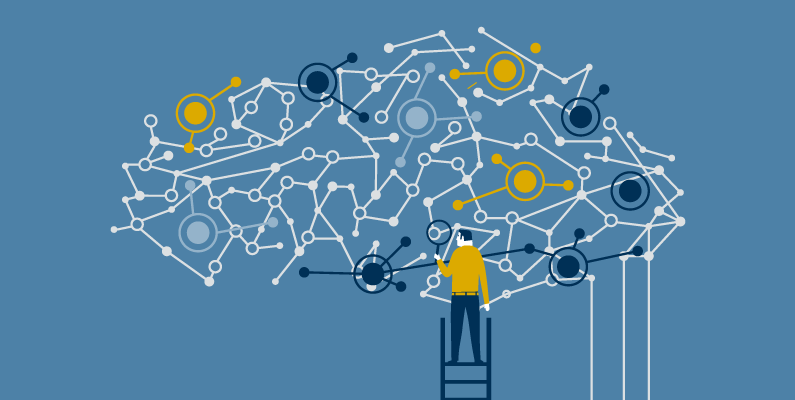
The science of psychology spans several fields. There are dozens of disciplines in psychology, such as abnormal psychology, cognitive psychology and social psychology.
But one way to view these different fields is to separate them into two types: applied vs. experimental psychology. These groups describe virtually any type of work in psychology.
The following sections explore what applied psychology is and some examples of what it covers.
What is Applied Psychology?
Applied psychology uses psychological methods and findings (experimental psychology) to solve problems of the human experience.
It is nearly impossible to develop a precise definition for applied psychology due to the sheer scope of the term. Findings are applied in fields like clinical psychology, educational psychology, forensic psychology, sports psychology and social psychology — nearly every psychological discipline. Unless the field is exclusively research-based, applied psychology is involved.
An example of the breadth of applied psychology is the non-exhaustive sample of topics deemed appropriate for the Journal of Applied Psychology, which includes:
- individual differences in abilities, personality and other characteristics;
- testing and personnel selection;
- performance measurement and management;
- training, learning and skill acquisition;
- work motivation;
- job attitudes, affect and emotions;
- leadership;
- team development, processes and effectiveness;
- career development;
- work–family interface;
- work stress, health and well-being;
- positive and negative work behaviors;
- diversity and cross-cultural differences in work behavior and attitudes;
- technology and work systems;
- expertise and knowledge management;
- creativity, innovation and adaptation;
- organizational culture and climate; and
- organizational design, change and interventions.
Applied Psychology and Technology
One of the biggest trends in applied psychology is in developing technology.
Smart vehicles, smart homes and other types of devices are widely available, but smart systems aren’t so clever if they’re too complicated to use, according to the American Psychological Association. Human factors psychologists are designing products and systems that are easier and more enjoyable to use. Work is being performed in areas like human-robot interactions, brain-machine interfaces and virtual reality systems.
Technology companies are looking for insights on human behavior, such as how people use speech recognition systems and what makes someone want to engage with a device. This has led to a new field — neuroergonomics — which applies tools and knowledge from neuroscience to design safer, smarter and more efficient human-centered systems. These systems could help prevent worker fatigue, and adapting the amount of automation depending on workers’ attention levels and cognitive state.
Applied psychologists are also seeing other areas of opportunity in transportation and health care.
- Research is focused on developing driver-vehicle interfaces in smart cars that are intuitive and reduce accidents. Psychologists will play a critical role in educating and training the public to use these systems, so that they are not afraid or overly confident.
- In health care, the demand for psychologists has increased after the U.S. Food and Drug Administration issued a guidance in 2016 that manufacturers integrate human factors into the testing process when developing new medical devices. Psychologists are being used to enhance patient safety, from robotic surgical tools to at-home glucose monitors. Another area where psychologists are applying their research skills is in studying hospital and health care errors. They are looking for gaps in communication that lead to medical errors and devising systems that minimize such mistakes.
Pursue Your Career Goals in Psychology
Develop a greater understanding of psychology concepts and applications with Concordia, St. Paul’s online bachelor’s in psychology. This is a fully accredited bachelor’s degree from Concordia University, St. Paul, offered online. Enjoy small class sizes with a personal learning environment geared toward your success, and learn from knowledgeable faculty who have industry experience.
Array
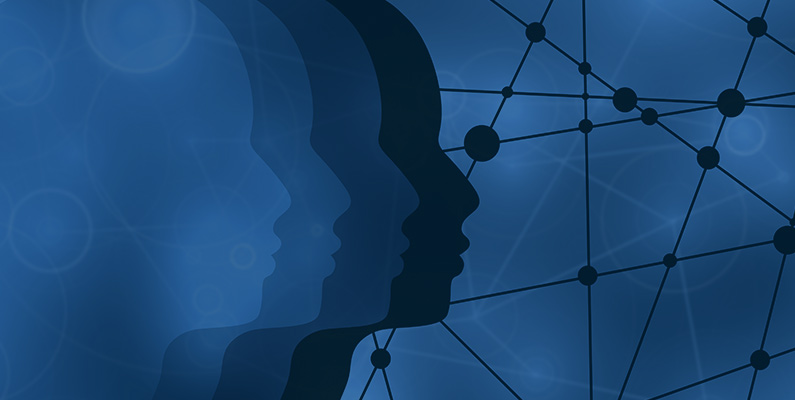
The science of psychology spans several fields. There are dozens of disciplines in psychology, including abnormal psychology, cognitive psychology and social psychology.
One way to view these fields is to separate them into two types: applied vs. experimental psychology. These groups describe virtually any type of work in psychology.
The following sections explore what experimental psychology is and some examples of what it covers.
What Is Experimental Psychology?
Experimental psychology seeks to explore and better understand behavior through empirical research methods. This work allows findings to be employed in real-world applications (applied psychology) across fields such as clinical psychology, educational psychology, forensic psychology, sports psychology, and social psychology. Experimental psychology is able to shed light on people’s personalities and life experiences by examining what the way people behave and how behavior is shaped throughout life, along with other theoretical questions. The field looks at a wide range of behavioral topics including sensation, perception, attention, memory, cognition, and emotion, according to the American Psychological Association (APA).
Research is the focus of experimental psychology. Using scientific methods to collect data and perform research, experimental psychology focuses on certain questions, and, one study at a time, reveals information that contributes to larger findings or a conclusion. Due to the breadth and depth of certain areas of study, researchers can spend their entire careers looking at a complex research question.
Experimental Psychology in Action
NASA
The APA writes about one experimental psychologist, Robert McCann, who is now retired after 19 years working at NASA. During his time at NASA, his work focused on the user experience — on land and in space — where he applied his expertise to cockpit system displays, navigation systems, and safety displays used by astronauts in NASA spacecraft. McCann’s knowledge of human information processing allowed him to help NASA design shuttle displays that can increase the safety of shuttle missions. He looked at human limitations of attention and display processing to gauge what people can reliably see and correctly interpret on an instrument panel. McCann played a key role in helping determining the features of cockpit displays without overloading the pilot or taxing their attention span.
“One of the purposes of the display was to alert the astronauts to the presence of a failure that interrupted power in a specific region,” McCann said, “The most obvious way to depict this interruption was to simply remove (or dim) the white line(s) connecting the affected components. Basic research on visual attention has shown that humans do not notice the removal of a display feature very easily when the display is highly cluttered. We are much better at noticing a feature or object that is suddenly added to a display.” McCann utilized his knowledge in experimental psychology to research and develop this very important development for NASA.
Valve Corporation
Another experimental psychologist, Mike Ambinder, uses his expertise to help design video games. He is a senior experimental psychologist at Valve Corporation, a video game developer and developer of the software distribution platform Steam. Ambinder told Orlando Weekly that his career working on gaming hits such as Portal 2 and Left 4 Dead “epitomizes the intersection between scientific innovation and electronic entertainment.” His career started when he gave a presentation to Valve on applying psychology to game design; this occurred while he was finishing his PhD in experimental design. “I’m very lucky to have landed at a company where freedom and autonomy and analytical decision-making are prized,” he said. “I realized how fortunate I was to work for a company that would encourage someone with a background in psychology to see what they could contribute in a field where they had no prior experience.”
Ambinder spends his time on data analysis, hardware research, play-testing methodologies, and on any aspect of games where knowledge of human behavior could be useful. Ambinder described Valve’s process for refining a product as straightforward. “We come up with a game design (our hypothesis), and we place it in front of people external to the company (our play-test or experiment). We gather their feedback, and then iterate and improve the design (refining the theory). It’s essentially the scientific method applied to game design, and the end result is the consequence of many hours of applying this process.” To gather play-test data, Ambinder is engaged in the newer field of biofeedback technology, which can quantify gamers’ enjoyment. His research looks at unobtrusive measurements of facial expressions that can achieve such goals. Ambinder is also examining eye-tracking as a next-generation input method.
Pursue Your Career Goals in Psychology
Develop a greater understanding of psychology concepts and applications with Concordia St. Paul’s online bachelor’s in psychology. Enjoy small class sizes with a personal learning environment geared toward your success, and learn from knowledgeable faculty who have industry experience.
Array

Psychological disciplines include abnormal psychology, cognitive psychology, and social psychology, along with dozens of other fields and specialties. However, you can separate these fields into two basic types of psychology: applied and experimental. Here is a look at the two types and common career paths for each.
Applied Psychology
What Is Applied Psychology?
Applied psychology uses psychological methods and findings (experimental psychology) to solve problems of the human experience. It is nearly impossible to develop a precise definition for “applied psychology” due to the sheer scope of the term. Findings are applied in fields such as clinical psychology, educational psychology, forensic psychology, sports psychology, and social psychology — nearly every psychological discipline. Unless the field is exclusively research-based, applied psychology is involved.
An example of the breadth of applied psychology is the non-exhaustive sample of topics deemed appropriate for the Journal of Applied Psychology, which includes:
- individual differences in abilities, personality, and other characteristics
- performance measurement and management
- training, learning, and skill acquisition
- leadership
- career development
- work-family interface
- work stress, health, and well-being
- creativity, innovation, and adaptation
- organizational culture and climate
Sample Careers in Applied Psychology
Psychologists
Psychologists study cognitive, emotional, and social processes and behavior by observing, interpreting, and recording how people relate to one another and to their environments. They use their findings to help improve processes and behaviors. Many kinds of psychologists work within applied psychology. For instance, school psychologists apply psychological principles and techniques to education disorders and developmental disorders.
Research may still be an aspect of the role. Psychologists often gather information and perform research, and whether they are considered as being within applied or experimental psychology will depend on the primary focus of their work.
One example is the field of industrial-organizational psychology, which focuses on the workplace, using psychological principles, and research methods to solve problems and improve the quality of work life. Psychologists in this field could be considered on the side of applied or experimental psychology depending on the extent of any research they perform. One industrial-organizational psychologist may work with business on applying best practices into the workplace while another may be actually conducting that research.
Psychologists typically need a doctoral degree, according to the BLS. The median annual wage for psychologists is $79,010, and employment is projected to grow 14% through 2026.
Mental Health Counselors
Mental health counselors, along with related careers like marriage and family therapists and school and career counselors, work within applied psychology. Mental health counselors help people facing grief, anxiety, depression, low self-esteem, stress, suicidal thoughts, and a variety of conditions. They help clients with a wide variety of mental and emotional health issues and relationship problems.
Often, mental health counselors perform the following tasks:
- Evaluate clients’ mental and physical health and assess their readiness for treatment
- Develop and oversee treatment goals and plans with clients
- Help clients work on the necessary skills and behaviors to face relevant issues
- Refer clients to other resources and services, such as support groups
- Conduct outreach programs to help people identify the signs of destructive behavior
Mental health counselors use certain approaches and theories to help clients. One popular approach is to combine behavioral therapy and cognitive theory to treat a number of illnesses such as anxiety, eating, personality, and substance abuse disorders.
Mental health counselors need a master’s degree and, depending on the state, 2,000 to 4,000 hours of supervised clinical experience. The BLS groups mental health counselors with substance abuse and behavioral disorder counselors; the median annual wage for all three careers is $44,630, and employment is projected to grow 23% through 2026.
Experimental Psychology
What Is Experimental Psychology?
Experimental psychology seeks to explore and better understand behavior through empirical research methods. This work allows findings to be employed (applied psychology) in real-world applications across fields such as clinical psychology, educational psychology, forensic psychology, sports psychology, and social psychology.
This area of psychology is able to shed light on people’s personalities and life experiences by examining what the way people behave and how behavior is shaped throughout life, along with other theoretical questions. The field looks at a wide range of behavioral topics that includes sensation, perception, attention, memory, cognition, and emotion, according to the American Psychological Association (APA).
Research is the focus of experimental psychology. Using scientific methods to collect data and perform research, experimental psychology focuses on certain questions, and, one study at a time, reveals information that contributions to larger findings or a conclusion. Due to the breadth and depth of certain areas of study, researchers can spend their entire careers looking at a complex research question.
Careers in Experimental Psychology
Experimental psychology careers are slightly more difficult to define compared to those in applied psychology. Applied psychology is seen as a broad field in which there are distinct subfields where practitioners may work, such as clinical mental health counseling. However, experimental psychology is typically seen as a field of its own. There are plenty of psychological specialties where experimental psychologists can work — research-focused positions are available in the vast majority of specialties and across industries — but the designation often remains the same: “experimental psychologist.”
“The exact type of research an experimental psychologist performs may depend on a number of factors, including his or her educational background, interests and area of employment,” according to the APA. “Often, psychologists with training in experimental psychology contribute across subfields, using scientific research to provide insights that improve teaching and learning, create safer workplaces, and promote healthy child development, to list a few examples. Those who work in academia often teach psychology courses in addition to performing research and publishing their findings in psychological journals.”
Regardless of the title, there are a wide variety of career opportunities in experimental psychology. One individual may be called an experimental psychologist and study memory, one professional may engage in research-based studies as an industrial-organizational psychologist, another may perform research and be a professor, and a final person may hold a completely different title (e.g., product user researcher) and conduct research that ultimately helps design consumer products.
Explore the Different Types of Psychology
Having a strong understanding of the various disciplines of psychology can help you excel in a variety of careers. With the online bachelor’s degree in psychology program from Concordia University, St. Paul, you can gain more insight into the differences between applied and experimental psychology so that you can find the right career path for you. Our program offers small class sizes, the ability to learn from experienced faculty, and the flexibility to study when it’s most convenient.
Array
It is common to hear the terms “psychiatrist” and “psychologist” used interchangeably; many do not understand the differences between the two careers. This is understandable because psychologists and psychiatrists often work together for the benefit of patients, so a lot of overlap exists. It is important to understand, though, that there are critical differences between the two professions. Primarily, the difference is the nature of the treatment each can provide.
Treatment Distinctions
Psychiatrists are physicians who have earned a medical degree and are board-certified in psychiatry. They are able to diagnose mental illnesses and write prescriptions for medications. Because of this, one big part of their job is to manage their patients’ medications for the duration of treatment. Psychologists, on the other hand, rely heavily on talk therapy or “psychotherapy” as a means to alleviate symptoms. In addition to counseling, a psychologist is qualified to run tests to evaluate the mental state of clients and make decisions about treatment.
Patients who need mental and emotional help often take action by getting a referral from their primary care provider to see a psychologist for evaluation. From there, the psychologist may refer the patient to a psychiatrist who can prescribe and monitor medication. At that point, the psychiatrist and the psychologist work together to help the client.
Education
When it comes to the amount of education required to become a psychologist versus a psychiatrist, one major difference is medical school. Psychiatrists must graduate from medical school and then complete a psychiatric residency. During residency, students of psychiatry work with children, adolescents and adults with varying degrees of mental illness. Residency provides real-world experience that teaches future psychiatrists how to treat patients of all kinds.
Psychologists, on the other hand, must earn a master’s or doctoral degree after their undergraduate degree in psychology. The level of education required depends upon the position. Graduate studies typically take four to six years, and graduate students study the science of diagnosing mental and emotional disorders for patients of all ages.
Psychologists must complete an internship. Internships are invaluable because they provide hands-on experience in treatment methods, psychological theory, testing methodology and problem solving. To become a licensed psychologist, most states require one to two years of supervised experience.
While an undergraduate degree in psychology provides an ideal background of knowledge, additional study and qualifications are required for both psychologists and psychiatrists.
Salary Potential and Career Growth
The Bureau of Labor Statistics (BLS) reports that the median annual wage for psychologists is $79,010. The projected growth of this job is 14% by 2028, which is much faster than the average for all occupations.
The BLS reports that psychiatrists earn a mean annual salary of $220,380. Employment of psychiatrists is also expected to grow faster than most fields.
Despite differences in day-to-day responsibilities, required education and salary, the core goal of both psychiatrists and psychologists is to help people get better; this common denominator makes both career paths very attractive for many. For those interested in a psychology career, an online degree from Concordia University, St. Paul is an ideal place to start. The Bachelor of Arts in Psychology program provides a solid educational foundation for continued education through graduate study.
Array
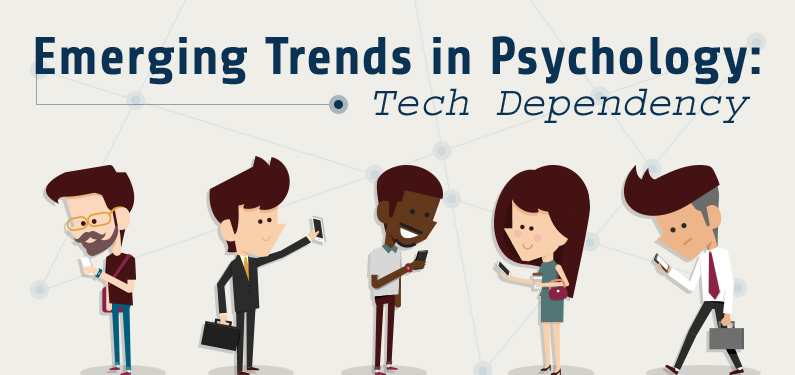
There’s no doubt that the exponential growth of technology has benefited society, but there is a darker side to the rise of the machine. As people become more and more technologically connected, some are concerned that we are losing important aspects of the human experience, becoming impatient, impulsive, forgetful, and even narcissistic. That’s why experts are questioning society’s dependence on technology: what it is, how it happened, and what we can do to mitigate the risks of dependency during a time of tech advancement.
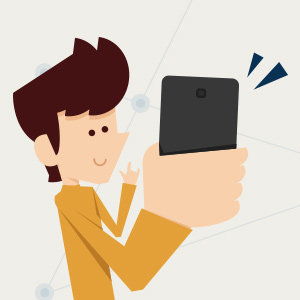
Regardless of age, gender, ethnicity, or economic status, most individuals are smartphone users — in fact, you probably have one on you right now. And we’re using them everywhere, from the dinner table to when we are driving. This is part of why we feel so much anxiety when phones are lost, dead, or even out of reach for a few minutes.
Smartphones and other devices have become so central to modern life that many rely on them for everything. When was the last time you remembered a phone number without checking, or paid your bills by mail? Communication with loved ones, money management, social media, and GPS directions are all tethered to the Internet and the Internet of Things, making connectivity more vital than ever before. All of this contributes to technology dependency, what a 2012 report claims is “possibly the biggest non-drug addiction of the 21st century.”
About Technology Dependence
When The New York Times covered the topic in 2010, the reporter interviewed Dr. Elias Aboujaoude, a psychiatrist and the author of Virtually You: The Dangerous Powers of the E-Personality. His assessment was less than positive: “More and more, life is resembling the chat room. We’re paying a price in terms of our cognitive life because of this virtual lifestyle.” And some studies have suggested that excessive dependence on cellphones and the Internet is akin to addiction. In the past, the central concern was that technology detracts from interpersonal relationships and social norms. However, psychologists have noticed a “subtle and more insidious” effect of the move to online: “It may be that the immediacy of the Internet, the efficiency of the iPhone and the anonymity of the chat room change the core of who we are,” The New York Times reports.
Now, a name has been coined for the fear of being without your phone: “nomophobia” (i.e., no mobile phobia). Psychology Today describes it as “that rush of anxiety and fear when you realize you are disconnected and out of the loop with friends, family, work and the world.” Polls suggest that women are slightly more prone to this separation anxiety: SecurEnvoy reports 70 percent of women and 61 percent of men experience these symptoms.
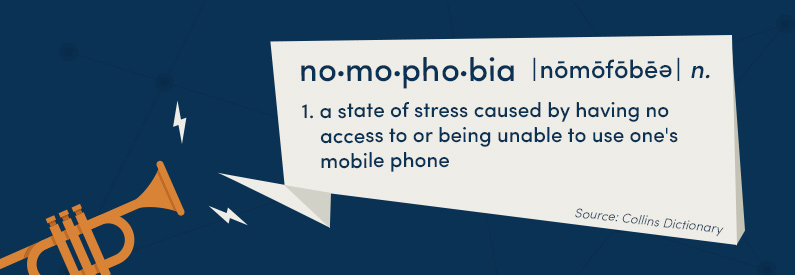
It’s important to keep in mind that these are not considered classic phobias and aren’t in the American Psychiatric Association’s Diagnostic and Statistical Manual of Mental Disorders (DSM-V), but this may change. It has been proposed to be included in the next edition, DSM-VI, as a specific phobia. However, validated psychometric scales are now available as a diagnostic tool. One example is the “Questionnaire of Dependence of Mobile Phone/Test of Mobile Phone Dependence.” According to the article “Psychological Predictors of Problem Mobile Phone Use,” psychological factors are involved in the overuse of mobile phones and other devices. These could include low self-esteem, impulsiveness, sensation-seeking, and highly extroverted or introverted personality. Technology dependence can also heighten the symptoms of preexisting disorders such as social phobia, social anxiety disorder, or panic disorder. One study reported that the stress levels associated with nomophobia are equivalent to those of “wedding day jitters” and trips to the dentist. The anxiety and other feelings caused by tech dependence are very real.
Whether nomophobia is a true mental disorder is up to interpretation and further research, but the impact on individuals’ lives is significant. More than one in two of those surveyed experiencing these anxieties report that they never turn off their phones. This is because, as marriage and family therapist Sharon Gilchrest O’Neill explains in an interview with Cult of Mac, there are calls and texts clients feel they must be able to answer. When we are constantly anticipating a technological interaction — a phone call, text, email, or social media notification — our bodies and brains respond in a way that registers as anxiety. In short, smartphones and other devices create a waiting game environment. The user is constantly anxious about missing out on what’s happening in the digital world. Psychologist Larry Rosen describes it to Computerworld as “that split between a level of addiction, meaning we’re trying to get pleasure, versus … trying to reduce our anxiety.”
Psychosocial Factors
Because technology is so woven into our daily lives, oftentimes users have no choice but to spend hours online each day. Dr. Kimberly Young, a psychologist and author of Caught in the Net, told The New York Times that technology dependence and nomophobia are similar to other addictions. Technology is essential in today’s society, so those who exhibit disordered online behavior can never entirely give up use. Instead, they must learn moderation and self-control. This is why some experts suggest setting limits for how often you check your smartphone, and even leaving it at home occasionally. Some restaurants and airport lounges are making the choice for us, by implementing “no cellphone use” and “quiet zone” policies. The trend toward such practices is reminiscent of how cigarette use has been banned in many public (and private) spaces. For some, not having the distraction of a smartphone makes an evening more enjoyable; for others, it may be stressful and anxiety-inducing.
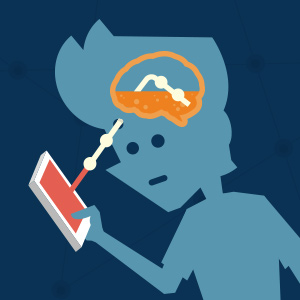
Clinical characteristics of nomophobia or technology dependence are easily noticeable in social settings. Individuals may considerably decrease face-to-face interaction with others, preferring to communicate via technology as much as possible. Because users may lean on smartphones and other technology to avoid feelings of discomfort, anguish, or stress, they exhibit extreme or irrational reactions when Internet use is restricted in airports, schools, hospitals, and workplaces. Signs of depression can occur when the user doesn’t receive digital contact such as “likes” on a Facebook photo or replies to text messages. Attachment symptoms include the urge to sleep with a device or have it at all times. When the device becomes necessary for peace of mind and security, technology dependence could be the cause.
Nomophobia or technology dependence could also be related to other disorders. Bragazzi and Puente suggest this in “A proposal for including nomophobia in the new DSM-V.” Those who are diagnosed with underlying social disorders are likely to experience “nervousness, anxiety, anguish, perspiration and trembling when separated or unable to use their digital device. Mobile phones, tablets or laptops make such individuals feel safer, more confident and less anxious. In short, nomophobic and tech-dependent behavior can reinforce social anxiety tendencies as a method of reducing stress generated by social anxiety or phobia. Empirically proven treatments are limited thus far because technology dependence is a relatively new concept. However, cognitive-behavioral psychotherapy combined with pharmacological interventions such as clonazepam and tranylcypromine have been successful in reducing its effects. It is important to note that these medications were designed to treat social anxiety disorder rather than nomophobia directly. Experts suggest investigating, identifying and treating any underlying mental disorders that may contribute to the dependent behaviors as the best starting point.
Combating Technology Dependence
Though there are serious cases of nomophobia and tech dependence that require professional medical or behavioral health interventions, there are ways for us to reduce reliance on technology and break bad habits. The following are tips and effective practices for maintaining a balance between our lives and the digital world.
- No texting while driving. This should be obvious for safety reasons, both for yourself and others. Keep smartphone use to before and after you drive.
- No taking your device into the bathroom. These small breaks add up and can help you step away from your screen. Not to mention, this tip prevents phone death by toilet or sink.
- Pay with your wallet. It seems small, but think about how many times a week you make a financial transaction. Keeping your phone in your pocket while you pay could significantly reduce screen time, even if it’s just because you have to put it down for the moment.
- Keep your phone out of bed. It’s tempting to fall asleep while scrolling through Facebook, but breaking this habit is another way to reduce technology dependency. Also turn off the phone completely while you’re asleep.
- Turn off your phone when you’re with friends. This may be the most difficult habit to break. Focus on the people you are interacting with in person, not just on social media.
- Try leaving your phone at home. When possible, spend a day without technology at your fingertips. You can start with a dinner date of a few hours and then progress to being without your phone for an entire day.
When it comes to technology dependence, personal moderation can play a central role. Though the Internet has become a requirement for many aspects of our lives, there are still many occasions when unplugging is possible — and preferable — to being tethered to a device. With continuing innovation and technology changes, it will become more difficult to strike a balance between “real” life and online life. But as more is learned about our tendency to become attached to technology, strategies and even treatments will emerge to help mitigate the negative behaviors associated with it.
If you are interested in the psychology and social behaviors behind technology dependency, a degree in psychology may be right for you. Concordia University, St. Paul’s bachelor’s degree in psychology online provides a solid educational foundation for both entry-level social sciences careers and continued education in graduate programs.
Array

Wake Up on the Right Side of the Bed
One daily activity that has the most profound impact on our health, productivity, mood, and memory is sleep. Yet, more than one-third of U.S. adults get less than the recommended amount (7–9 hours), limiting their potential to succeed both academically and professionally. It’s time to get inside our heads to understand why a good night’s rest is critical to our success.
Your Brain on Sleep
Sleep is made up of several stages — each lasts about 90–110 minutes. While we rest, our bodies turn off, but our brains continue to work throughout the night.
Stage 1: Just Drifting
Stage 1 is a period of light sleep. In these first few moments of dozing off, many people experience the falling sensation and involuntary muscle jerks.
Stage 2: Sawing Logs
You become fully asleep in stage 2. Brain waves slow down as spurts of activity — called sleep spindles and k-complexes — help suppress any to outside stimuli.
Stage 3: Total Relaxation
During this restorative period of slow-wave sleep, your breathing rate, heart rate, and blood pressure reach their lowest levels. Memory consolidation of facts and events also takes place.
REM: Deep in Dreamland
During rapid eye movement sleep (REM), your muscles become paralyzed while your brain works overtime. This period involves intense brain activity, such as dreaming, memory consolidation, and information processing.
If You Don’t Snooze, You Lose
It’s easy to push aside sleep in favor of school or work commitments, but it may end up causing more harm than good. 45% of Americans say that poor or insufficient sleep negatively affected their daily activities at least once in the past week. And when a lack of sleep or disruptive sleep becomes habitual, it can have even longer-lasting effects.
Cognitive Ability
Sleep deprivation can impact learning, attention, decision-making, and memory, especially if you’re not getting enough slow wave or REM sleep.
Poor Performance
Sleep problems is one of the top 3 factors that negatively impacted college students’ academic performance.
Mood
Sleep quantity and quality have a huge impact on mood. When you’re not feeling well-rested, you can be more irritable, angry, overwhelmed, and stressed.
Stressed Out
91% of Americans report that too little sleep was a stress trigger.
Health
Since sleep contributes to our health and well-being, a lack of it is correlated with problems such as heart disease, high blood pressure, obesity, and depression.
Sleep Bad, Feel Bad
67% of Americans who reported “less than good” sleep quality also reported “poor” or “only fair” health.
The REMedy to your Sleep Problems
You owe it to yourself to get the right amount of sleep each night. Now that you understand why sleep is so important, here are some tips from the National Sleep Foundation on how you can catch some of those precious z’s.
Create the ideal environment
Set the scene for a good night’s sleep. In the evening, keep the room dark and set your thermostat to a cooler temperature. In the morning, let natural light come in to help signal when it’s time to wake.
Avoid electronics
Working late on your computer or texting on your iPhone may be keeping you up. Blue-light screens can suppress the hormone (melatonin) that helps regulate your sleep patterns. Be sure to set aside enough time to turn off before you turn in.
Stick to a Schedule
When the weekend comes, it may be tempting to stay up late or sleep in. But this can disrupt your natural sleep cycle and make you feel like you’re experiencing jet lag. When planning your weekend activities, try to stick to your weekday sleep schedule.
Sleep is more than just letting our bodies rest; it’s about making sure we feel great, think clearly, and perform to the best of our abilities. So turn off the lights, hit the hay, and start slumbering.
Array

What Happens When We Experience Romantic Love
Love may be a mystery to some, but we know more about it than you might think—and psychologists are uncovering more of its intricacies every day. So, what really happens when you fall in love?
The Side Effects
No, you’re not imagining those euphoric, blissful, and sometimes painful feelings that come with love. Check out the chemicals—and their effects—that your brain produces to give you that lovin’ feelin’.
Short-term effects:
Dopamine
Can’t get enough? As the pleasure-giving neurotransmitter, dopamine keeps you coming back for more.
Norepinephrine
Also known as noradrenaline, this chemical makes your heart go pitter-patter and gives you that first-love excitement.
Serotonin
Feeling obsessed with your new S.O.? Blame the decrease in serotonin that often happens when you’re in love (also common with obsessive compulsive disorder).
Long-term effects:
Oxytocin
Nicknamed “the love hormone,” oxytocin creates the feeling of closeness and helps with building long-term attachment.
Vasopressin
The release of this chemical also contributes to the feeling of increased attachment in love.
Defining Love
Although love seems intangible, psychologists often seek to define it. The triangular theory of love was developed by psychologist Robert J. Sternberg to explore love’s elements—intimacy, passion, and commitment—and how they combine to determine different kinds of relationships.
- Intimacy: Closeness & connectedness
- Passion: Emotional & physical bonding
- Commitment: Choice & decision
When all 3 elements come together, it’s called consummate love. Although the ultimate goal, it’s often hard to maintain.
Making Love Work
Love has no easy answer. But countless studies have helped identify certain behaviors and habits that can contribute to a happier relationship. Below are just a few:
Invest time and energy
One study found that spouses who spent time talking or sharing an activity with each other at least once a week were 3.5 times more likely to be very happy in their marriage, compared with spouses who shared less couple time.
Fight the right way
When arguing, engage in constructive fighting strategies like listening and having a calm discussion. A long-term study on 373 couples found that destructive fighting (e.g., yelling, criticizing) and withdrawal predicted higher divorce rates.
Share in your partner’s triumphs
It’s not just about how you respond to the bad. Studies have shown that when partners react to positive event disclosures in a supportive way, couples report feeling more intimate and satisfied with their relationship.
Perhaps we’ll never know the answers to all of love’s questions. But with psychology’s help, we can bring together the mind, body, and human experience to get close. Learn more about how you can utilize a degree in psychology to discover more about the science of love.
Array

Why we do what we do.
When you’re hungry, you eat. When you’re tired, you sleep. When you want a good grade, you study. But what motivates you to get from point A to point B? In other words, why do we do anything?
Motivation
In its most basic sense, motivation is the need or desire to do something. 1 Understanding what motivation is defined as is completely different – and much simpler – than understand what causes motivation.
There are several perspectives used when examining the root cause for motivation, and when taken together, they help us understand what drives us. Here are just a few of them:
- Drive-Reduction Perspective: Motivation arises as a result of biological needs. You are compelled to reduce a need in order to maintain our bodies’ homeostasis – the balance of physiological systems. 2
Example: A rumbling stomach signals the body that you’re hungry, and the need to maintain balance motivates you to eat.
- Optimal Arousal Perspective: We’re motivated to maintain a balance between stimulation and relaxation so as to avoid boredom and stress. 2
Example: Adrenaline junkies love to skydive, but tamer individuals prefer a trip to the movies.
- Maslow’s Hierarchy of Needs Perspective: The hierarchy is a five-tier model of human needs that is often illustrated as a pyramid. Needs lower on the pyramid – the most basic – must be satisfied before you can advance to the next level. Most psychologists recognize you can move around the pyramid pretty fluidly, but the concept of needing to meet basic needs before attaining higher-level goals is widely accepted. 3
Intrinsic vs. Extrinsic
It’s important to note the difference between internal motivating factors and external ones, which can encourage or discourage behavior.
Extrinsic (external) motivation comes from your expectation of punishment or reward. 1
- Competing in sports to win trophies.
- Completing chores to earn an allowance.
- Getting home by curfew to avoid being grounded.
Intrinsic (internal) motivation comes from you finding pleasure in the activity itself. 1
- Learning a new language because it’s fulfilling.
- Painting a picture because it’s relaxing.
- Running in order to get a runner’s high.
Looking for more information? Whether you want to pursue a specific career in psychology or you simply love learning about human behavior, you can earn your degree online at Concordia, St. Paul. Visit online.csp.edu today!
Sources
Array
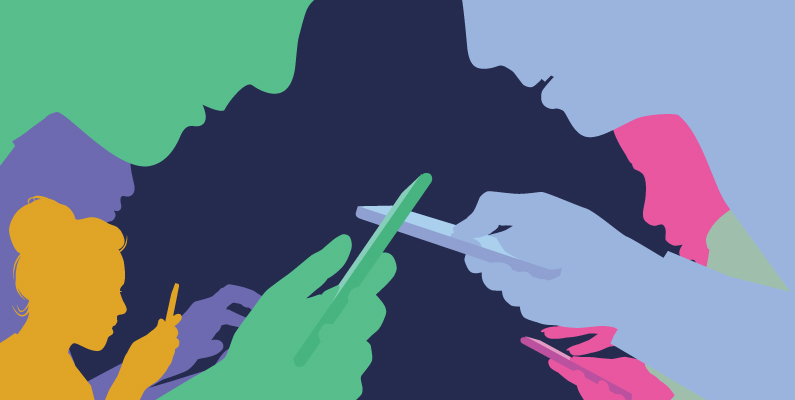
The term “nomophobia”—no mo (no mobile) phobia (fear)—was coined during a 2010 study commissioned by the UK Post Office, according to Psychology Today. The UK study found that 53 percent of mobile phone users in Britain tend to be anxious when they have lost their mobile phone, have no network coverage, or their phone is out of battery. Nine percent felt stressed when their cell phone was off. This is also a growing problem in the United States. For the average case of nomophobia, the stress involved was on par with those associated with “wedding day jitters” and trips to the dentist.
Characterizing Nomophobia
An article in Scientific American depicted the instinctual reaction that can take place when someone realizes that his or her phone is not where it’s supposed to be:
“My dependence on devices reached an embarrassing low recently. As I hurried to leave for work one morning, I patted my back pocket and realized I did not have my phone. Seconds later, in a fully automatic behavioral response, I patted my back pocket again, this time reaching for my phone in order to help find my phone. Shame washed over me as I realized the thought process I had just gone through: ‘I do not know where my phone is! I will just get my phone to help me find it.’”
The incident sheds light on two important aspects of nomophobia:
- The anxiety and distress that some people experience when not having their phone
- The degree to which people depend on phones to complete basic tasks and fulfill important needs like learning, safety, and staying connected
Researchers found these qualities when conducting a 2017 study that was published in Cyberpsychology, Behavior, and Social Networking journal. Most students surveyed admitted that their phones were almost an extension of themselves, and that they get attached to them because their phones store and share many details of their lives. Because of the dependency on their devices, users wanted their phones nearby at all times.
Consequences of Nomophobia
Students in the Cyberpsychology, Behavior, and Social Networking study not only displayed anxiety symptoms and attachment tendencies, but they had phone-induced wrist and neck pain, trouble focusing on work or studying, and they often let their devices distract them. Research published in a 2016 Computers and Behavior journal article shows that phone separation can lead to an increase in heart rate and blood pressure.
According to Scientific American, the dependence in nomophobia has important psychological consequences; as the article reported, “research on transactive memory finds that when we have reliable external sources of information about particular topics at our disposal, then this reduces our motivation and ability to acquire and retain knowledge about that particular topic.”
Spouses who rely on each other for information is an example of reduced motivation to retain knowledge. When you take away that access, problems occur. It can be as simple as being unable to log into a bank account or not knowing where the cereal goes. “Now we have a source of near omniscience in our pockets,” Scientific American continued, “Why bother remembering anything when you can always just ask Siri?”
Due to information acquisition and retention, the brain tends to treat devices like relationship partners. As a result, this can help explain the distress caused when a “relationship” is lost after a phone slips out of someone’s pocket.
Pursue Your Career Goals in Psychology
Nomophobia is just one aspect of psychology that is becoming more important with the rise in technology. Develop a greater understanding of psychology concepts and applications with Concordia University, St. Paul’s online bachelor’s in psychology. Enjoy small class sizes with a personal learning environment geared toward your success, and learn from knowledgeable faculty who have industry experience.